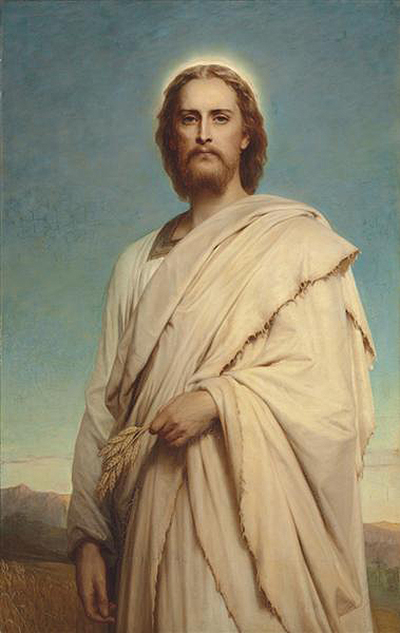The painting of Christ of the Cornfield by Frank Dicksee is an oil on canvas painting done in the year 1883. The painting, Christ of the Cornfield, depicts a parable of Christ about the growth in the kingdom of God.
Literal interpretation suggests that it aims to serve as a correction provided for any ancient or Today's followers who might feel discouraged with the amount of hard work they extended towards those who fail to listen to the word of God. It states that even if a farmer sleeps, the kingdom of God still grows, and its growth is because of God and not man's effort. Frank Dicksee used the Realism Style of painting this artwork as in many other of his paint too. The artist loved painting dramatic scenes from history and legend and this portrait main character is Christ who occupies the central position of the paint, Christ on the Confield. He is clad in white robes probably depicting holiness and is holding seed of grains in his left hand.
His eyes have gazed directly at the viewer's eyes and they are filled with so much pain. It is difficult to get your eyes from his gaze. On top of his head is a circle of brightness indicating the holy trinity. His face is equally bright. The paint, Christ on the Cornfield, has a natural source of light as the scene is in an open filed. The sun is most likely was resting far into the background beyond the hills. This casts a golden reflection of light on the field Christ is standing on. The mood of the paint Christ on the Cornfield is sad as can be seen from Christ's eyes. It also invokes a lot of thoughts on the mind of the viewer. It is a calm picture in general. The position of Christ in the paint is Close up and standing.
Dicksee's father was a painter who had a profound influence on Frank's painting work. He in numerous occasions acknowledged his fathers work and all the knowledge he gained from his teachings. Frank Dicksee's other work includes The daughters of Eve, Harmony, Romeo and Juliet, The End of a quest, A Roman Maiden, The two Crowns and Chivalry among many others.




